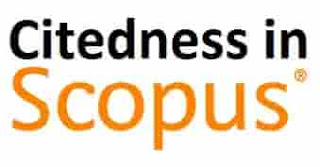Revitalizing Tepung Tawar to Protect Local Cultural Heritage of Aceh Tamiang
DOI:
https://doi.org/10.31091/mudra.v37i2.1656Keywords:
Culture, Malay, Tepung TawarAbstract
This research aims to revitalize the tradition of Tepung Tawar as a form of strengthening and protecting local culture in Malay society in Aceh Tamiang Regency. This is a qualitative study that uses descriptive methodologies. Data is gathered using various methods, including interviews, documentation, and field observations. Data analysis is accomplished by presenting and condensing data from interviews and observations. The data is processed by describing the information gathered during the interview and observation procedure in the field. According to the findings of this study, 12 subdistricts in Aceh Tamiang continue to use Tepung Tawar in a variety of processes. 4 sub-districts conduct Tepung Tawar processions only on specific activities, namely Banda Mulia, Sekerak, Seruway, and Tamiang Hulu subdistricts. In the four sub-districts, the revitalization of the tradition of Tepung Tawar was carried out in coordination with the Chairman of MAA, indigenous elders, and community leaders. After conducting interviews and observations, it was discovered that the process of revitalizing the Tepung Tawar tradition is carried out in five ways, namely (1) procurement of competitions in the community about the tradition of Tepung Tawar, (2) training the village youth about the procession of Tepung Tawar, (3) strengthening the traditional institutions to pay attention to the procession of Tepung Tawar, and (4) strengthening the traditional institutions to pay attention to the procession of Tepung Tawar. The preservation and maintenance of local culture, Tepung Tawar, is necessary to prevent degradation soon.
Downloads
References
Aka, Zainal Arifin. (2016). Ragam Pesona Upacara Adat Melayu Langkat. Langkat : Sanggar Seni
_______. (2016). Seni Budaya Melayu. Medan : Mitra Medan.
Arikunto, Suharsimi. (2006). Prosedur Penelitian: Suatu Pendekatan Praktik. Jakarta: Rineka Cipta
Dhuhri, Saufuddin. (2009). Peusijuek: Sebuah Tradisi Ritual Sosial Masyarakat Pasee dalam Perspektif Tradisionalos dan Reformis dalam Proceeding International The 3rd International Conference on Development of Aceh (ICDA) 2008 halaman 636-656. Lhokseumawe: Unimal Press
Karmini, N. N. (2019). Nilai-Nilai Budaya Dalam Tam Tam. Mudra Jurnal Seni Budaya, 34(1), 8–18. https://doi.org/10.31091/mudra.v34i1.630
Mulyana, Deddy. (2006). Ilmu Komunikasi: Suatu Pengantar. Bandung: Remaja Rosdakarya
Riezal. (2018). Konstruksi Makna Tradisi Peusijuek Dalam Budaya Aceh. Jurnal Antropologi: Isu-Isu Sosial Budaya. December 2018, Vol. 20 (2): 145-155.
Soviana, Nana. (2018). Integritas Kearifan Lokal Budaya Masyarakat Aceh dalam Tradisi Peusijuek dalam Jurnal Deskovi: Art and Design Journal Vol.1 No.1 Tahun 2018 hal.29-34.
Sugiyono. (2005). Memahami Penelitian Kualitatif. Bandung: Alfabeta
Syah, Dedi Kurnia. (2018). Komunikasi Lintas Budaya. Jakarta : Simbiosa Rekatama Media.
Wahid, A. N., Sumarlam, ., & Subiyantoro, S. (2018). Tradisi Ziarah Makam Bathara Katong (Tinjauan Deskripsi Akulturasi Budaya). Mudra Jurnal Seni Budaya, 33(2), 215–222. https://doi.org/10.31091/mudra.v33i2.289
Wibowo, Agus Bidi.(2013). Sari Informasi Budaya: Peusijuek dalam Masyarakat Aceh. Banda Aceh: Balai Pelestarian Nilai Budaya.
Yulinis, Y. (2019). Eksistensi Payung Dalam Kebudayaan Minangkabau Di Era Globalisasi. Mudra Jurnal Seni Budaya, 34(2), 275–283. https://doi.org/10.31091/mudra.v34i2.711
Downloads
Published
How to Cite
Issue
Section
License
Copyright (c) 2022 Joko Hariadi, Muhammad Arif Fadhilah, Azrul Rizki, Indah Fajarini

This work is licensed under a Creative Commons Attribution-NonCommercial-ShareAlike 4.0 International License.
- Copyright on any open access article in a journal published by Mudra Jurnal Seni Budaya is retained by the author(s).
-
The Creative Commons Attribution License 4.0 formalizes these and other terms and conditions of publishing articles.










